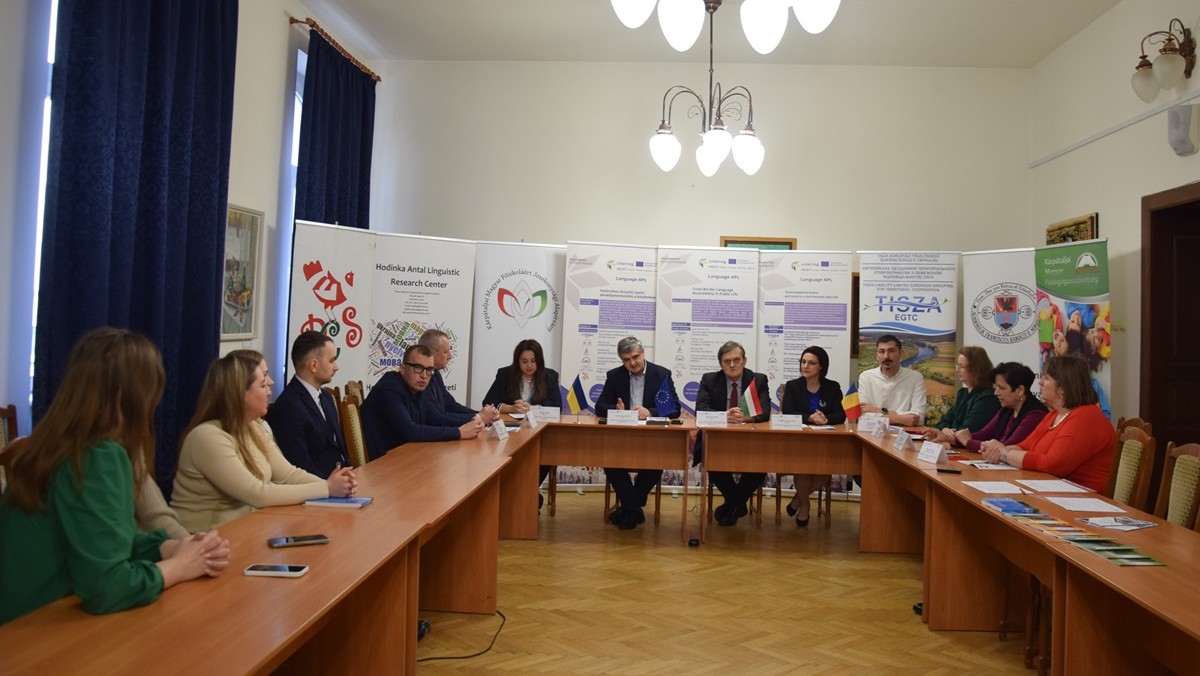Cross-Border Language Accessibility in Public Life
In line with European Union directives, all initiatives that promote accessibility (European Accessibility Act) and facilitate border permeability (Frontex: The European Border and Coast Guard Agency) receive support. As part of the EU’s enlargement policy, the Interreg Europe program was established to reduce disparities in development, growth, and quality of life across EU regions and border areas of countries preparing for accession through funded projects.
One of its subprojects, titled “Cross-Border Language Accessibility in Public Life“, aims to promote multilingualism while considering the needs of visitors potentially arriving from neighboring regions.
The project’s lead beneficiary was the Tisza Limited Liability European Grouping of Territorial Cooperation, with project partners including the Charitable Foundation for the Transcarpathian Hungarian College (KMF JA), the Transcarpathian Hungarian Pedagogical Association (KMPSZ), the Ferenc Rákóczi II Transcarpathian Hungarian College of Higher Education, the Pro Cultura Subcarpathica (PCS) civil organization, and the Romanian Fundaţia Identitás Foundation.
On January 31, the participants held a press conference at the Rákóczi College, where they provided the public with a closer insight into the project.
The attendees were welcomed by Tünde Tóth, the director of KMF JA, who then introduced the participants.
“The Charitable Foundation for the Transcarpathian Hungarian College considers it important to support local public life, education, its development, and higher education. This is how we were able to join this international program,”
she said.
Through its Ukrainian partner, the Hodinka Antal Linguistic Research Center, operating at the Ferenc Rákóczi II Transcarpathian Hungarian College of Higher Education, also joined the project. The center has previously launched several similar initiatives, primarily researching the use of the Hungarian language in official and private spheres. One of the key findings of these studies is that among Transcarpathian Hungarians, there is a strong demand for the use of Hungarian in official communication, while in the private sector, historical transformations have led to an increasing need for multilingualism.
“The predecessor of the Hodinka Antal Linguistic Research Center was established in 2001, focusing from the very beginning on studying Ukraine’s language policy, linguistic legal situation, and the bilingualism and multilingualism of the Transcarpathian Hungarian community,”
emphasized István Csernicskó, rector of Rákóczi College. He added that in many regions of the Western world—including the seat of the European Union—multilingual signs and informational materials are displayed in streets and public spaces. These serve both to assist non-locals in finding their way and to emphasize that a multilingual community is a valuable asset.
“Linguistic diversity is a value that must be preserved,”
he stated.
Oszkár Seszták, president of Tisza EGTC, emphasized the importance of linguistic research in his speech. He pointed out that after the political transition, a period of linguistic isolation began. One of the key objectives of the current project is to overcome this barrier and create greater permeability between languages.
Zsolt Kovács, project manager of the Fundaţia Identitás Foundation, reported that Ukrainian schools have appeared in Satu Mare, indicating that researchers must address not only Romanian-Hungarian language issues but also Ukrainian language concerns.
András Kiss, vice president of the Young Christian Democratic Union, emphasized the importance of value creation. He highlighted that this project is equally significant for the Hungarian, Ukrainian, and Romanian sides, particularly for the Hungarian minority communities.
“I am proud that the city of Beregszász can take part in a project that strengthens our community even further. According to current legislation, we can only display Hungarian symbols in public spaces or on buildings if they are accompanied by Ukrainian ones. Despite this, the city administration and I are doing everything we can to ensure that the local Hungarian community can fully embrace and express its identity,”
concluded Zoltán Babják, mayor of Beregszász, at the press conference.
The project is supported by the European Union in the framework of the Interreg VI-A NEXT Hungary-Slovakia-Romania-Ukraine Programme 2021-2027.
K. A.
-
This article is also available in
Українська
Magyar

